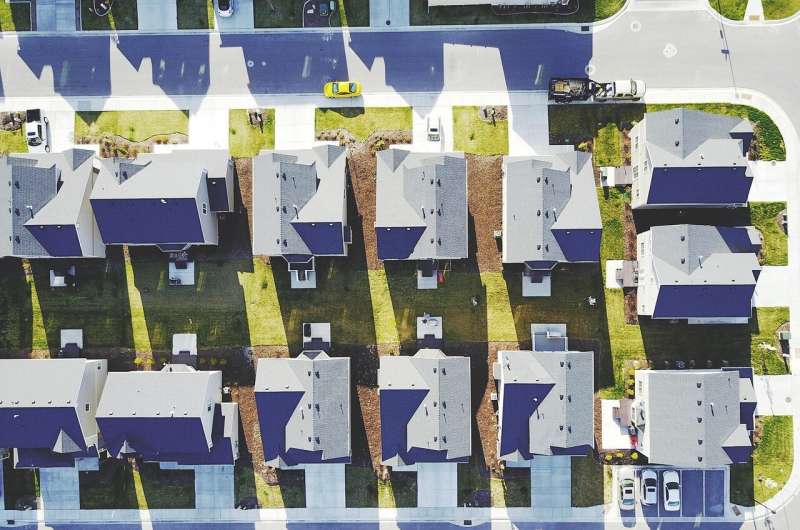This article has been reviewed according to Science X's editorial process and policies. Editors have highlighted the following attributes while ensuring the content's credibility:
fact-checked
peer-reviewed publication
trusted source
proofread
Building footprints could help identify neighborhood sociodemographic traits

An analysis of building footprints in major US metropolitan areas identifies five different neighborhood types that vary in footprint size, shape, and placement, and which are statistically associated with varying neighborhood socioeconomic and demographic traits. Noah Durst of Michigan State University and colleagues present these findings in PLOS ONE.
People have long studied the shape and placement of human settlements—"neighborhood morphology"—to help inform urban planning and management. Recent technological advancements, such as high-resolution satellite imagery and more powerful computational tools, have opened up novel possibilities for this field.
In their new study, Durst and colleagues applied a set of open-source computational tools that was recently developed, in part, by one of the co-authors for analyzing building footprints. They used these tools, collectively known as Foot, to assess footprint patterns across five of the largest US metropolitan areas: Atlanta, Boston, Chicago, Houston, and Los Angeles.
The analysis identified five different neighborhood types based on building footprints. For example, class 1 neighborhoods have smaller buildings with little variation in orientation, meaning most are likely cookie-cutter residential neighborhoods. Class 1 neighborhoods make up a high of about 31% of Boston-area neighborhoods and a low of about 19% of Los Angeles-area neighborhoods.
The research team also discovered links between the different neighborhood types, where they tend to be located across the urban landscape, and neighborhood sociodemographic traits, such as population density, homeownership, and commuting by car.
For instance, class 5 neighborhoods, which have high density and variability of building footprints, tend to be older and located in more central urban areas, and are associated with a mix of renters and homeowners. Meanwhile, class 1 neighborhoods tend to be more recently built suburbs with high rates of homeownership.
Class 2 neighborhoods—which have high variability in size, shape, and placement of buildings but with low building density—are typically located on the urban outskirts and have low population density.
These findings highlight the potential for research using tools like Foot to help inform a variety of issues, such as housing policy, infrastructure investment, and residential segregation.
The authors add, "Our study illustrates that neighborhood morphology varies markedly across metropolitan America and that neighborhoods of different types differ in regard to a number of key socioeconomic indicators. These findings point toward neighborhood morphology as a potential link between the various policies that shape urban space (e.g., land use regulations) and the effects of neighborhoods on important societal outcomes (e.g., residential segregation)."
More information: The spatial and social correlates of neighborhood morphology: Evidence from building footprints in five U.S. metropolitan areas, PLoS ONE (2024). DOI: 10.1371/journal.pone.0299713
Journal information: PLoS ONE
Provided by Public Library of Science





















